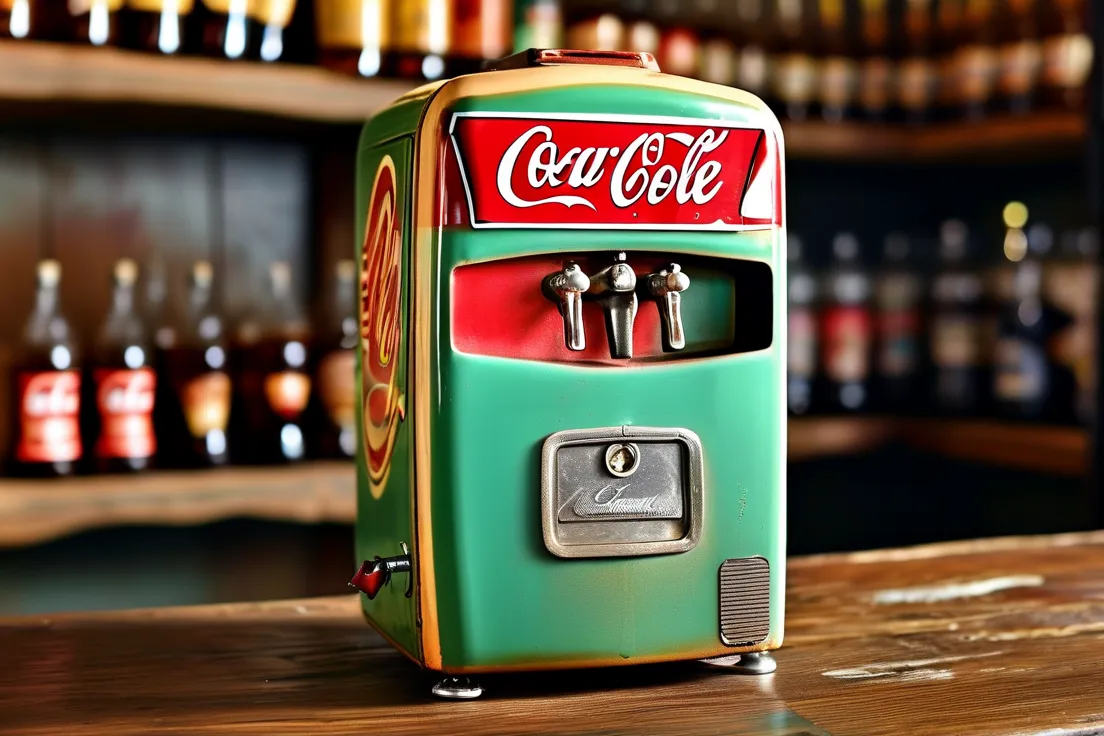Restoring a vintage Coca-Cola machine isn’t just a hobby—it’s a journey into mid-century Americana. Whether you’ve inherited a classic dispenser or scored one at an auction, sourcing authentic old Coke machine parts is critical to preserving its historical integrity and functionality. This guide distills decades of restoration expertise into actionable steps, helping you avoid costly mistakes and achieve museum-quality results.
Step 1: Identify Your Machine’s Model & Era
Before hunting for parts, pinpoint your machine’s exact model and production decade. Coca-Cola released iconic models like the 1940s Vendo 44, 1950s Cavalier 96, and 1960s VM80, each with unique components. Check for:
– Serial plates: Located inside the door or on the back panel.
– Design features: Sliding bottle mechanisms vs. vertical stacks, coin slot styles, or decal patterns.
– Archival resources: Cross-reference photos on Antique Vending Machine Collectors (AVMC) or Coca-Cola Collectors Club.
Pro Tip: Join forums like Reddit’s r/vendingrestoration to crowdsource identification help from seasoned collectors.
Step 2: Prioritize Original Parts for Authenticity
While reproduction parts are cheaper, original components maintain value and fit seamlessly. Focus on sourcing:
– Coin mechanisms: Look for stamped logos (e.g., National Rejectors Inc.) and avoid generic replacements.
– Condensing units: Original refrigeration systems (like Crosley or Kelvinator) are quieter and more durable than modern retrofits.
– Decals & trim: Scan eBay for NOS (New Old Stock) items with intact adhesive backing.
Case Study: A 1957 Cavalier restored with OEM parts sold for $12,500 at auction—$4,000 more than one using replicas.
Step 3: Trusted Suppliers for Rare Components
Avoid sketchy sellers by sticking to verified vendors:
1. VendingLand (Florida-based): Specializes in motors, compressors, and wiring harnesses for pre-1970 machines.
2. Soda Machine Parts Co.: Offers rare coin chutes and refurbished cooling coils with lifetime warranties.
3. Etsy vintage shops: Curated sellers like RetroVend often stock original knobs, glass panels, and signage.
Red Flag Alert: Sellers claiming “universal fit” parts likely lack model-specific compatibility—always request installation photos or schematics before buying.
Step 4: Inspect Parts for Hidden Damage
Vintage components often suffer from corrosion or wear. When evaluating listings:
– Check for rust: Surface rust is manageable; pitted metal indicates structural weakness.
– Test electrical parts: Ask sellers to verify voltage output (e.g., 115V for motors) using a multimeter.
– Verify gaskets: Brittle rubber seals will leak CO2—replace them with FDA-approved silicone versions.
Expert Insight: “Never skip bench testing,” advises Jim Walters, a 30-year restoration pro. “A $50 relay can fry a $2,000 compressor if it’s faulty.”
Step 5: Budgeting & Avoiding Scams
Allocate funds wisely using this breakdown:
– High-priority: Compressors ($300–$800), coin mechs ($150–$400), wiring ($75–$200).
– Cosmetic: Chrome trim ($20–$100 per strip), decal sets ($60–$150).
Avoid These Pitfalls:
– Sellers refusing returns or hiding part numbers.
– “Too good to be true” pricing (e.g., $50 compressors likely lack EPA-certified refrigerant).
Step 6: Modern Upgrades That Respect History
Some modernizations enhance usability without sacrificing aesthetics:
– LED lighting: Use warm-white bulbs behind original red lenses for safer interior visibility.
– Eco-friendly coolant: Retrofit R12 systems with R134a refrigerant (requires professional certification).
– Digital thermostats: Hide discreet modules behind vintage temperature dials.
Final Checklist Before Assembly
- Clean all parts with non-abrasive solutions (Simple Green works well).
- Lubricate moving components with food-grade silicone spray.
- Document each step with photos for future resale verification.
By methodically sourcing and restoring your machine, you’ll preserve a slice of soda history while creating a functional showpiece. For ongoing support, subscribe to Vintage Vending Monthly or attend events like the National Vending Machine Show—where experts demo repairs live and trade rare parts kits.

Leave a Reply